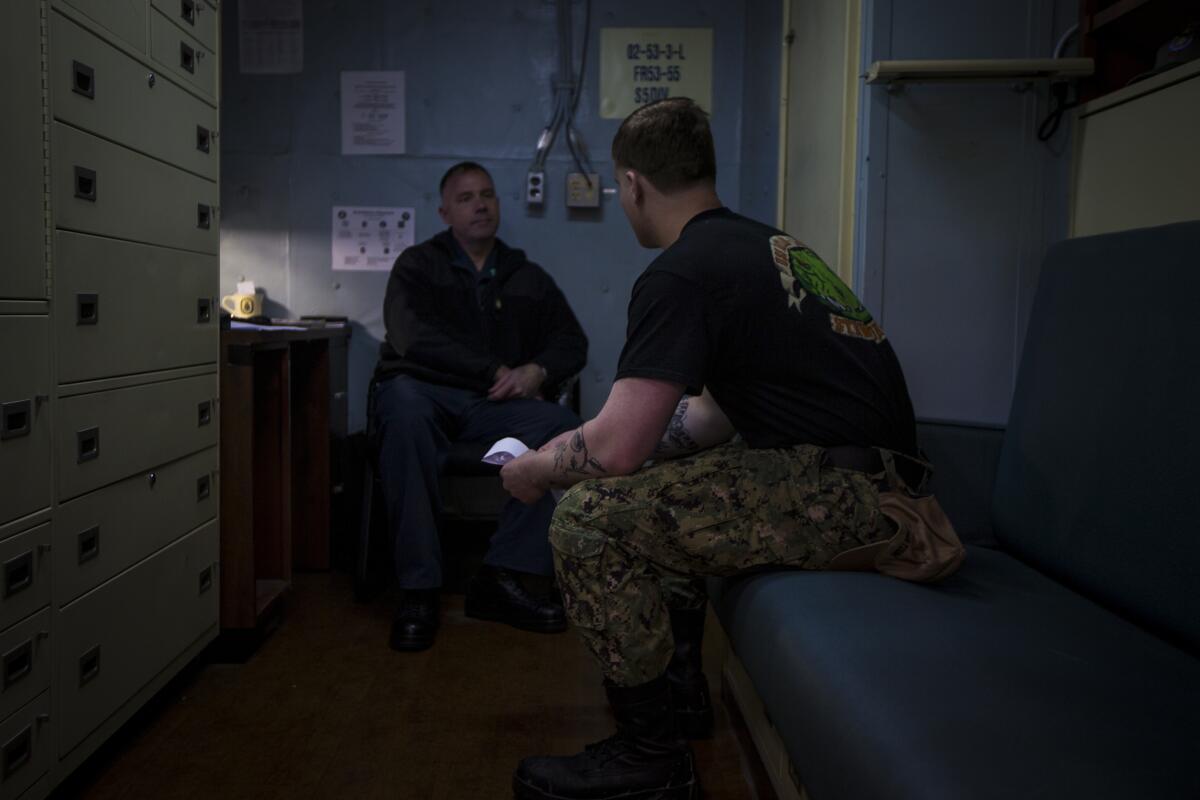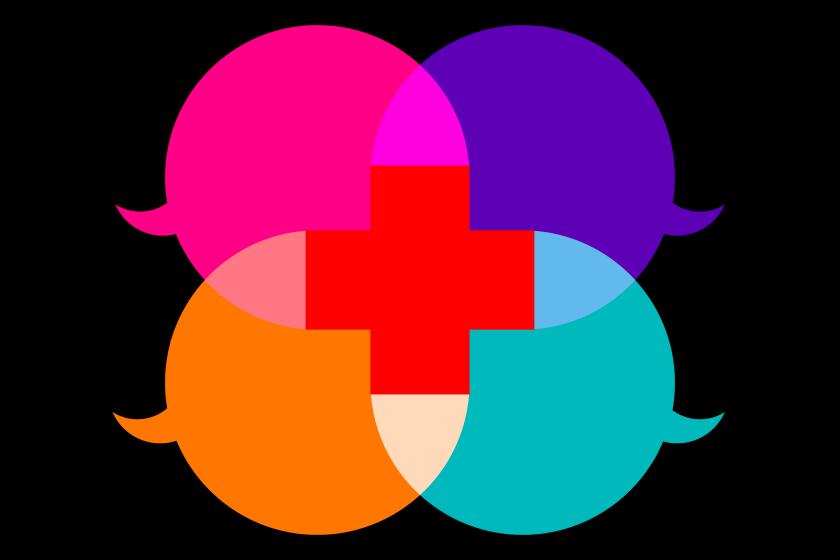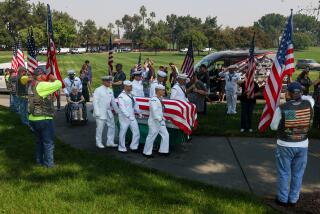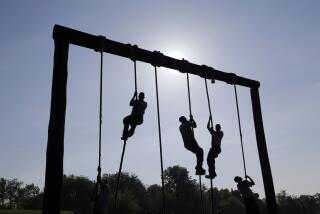U.S. Navy deploys more chaplains for suicide prevention

- Share via
NAVAL STATION NORFOLK, Va. — On Navy ships docked at this vast base, hundreds of sailors in below-deck mazes of windowless passageways perform intense, often monotonous manual labor. It’s necessary work before a ship deploys but hard to adjust to for many already challenged by the stresses plaguing young adults nationwide.
Growing mental health distress in the ranks carries such grave implications that the U.S. chief of naval operations, Adm. Michael Gilday, answered “suicides” when asked earlier this year what in the security environment kept him up at night.
One recently embraced prevention strategy is to deploy chaplains as regular members of the crew on more ships. The goal is for the clergy to connect with sailors, believers and nonbelievers alike, in complete confidentiality.
“That makes us accessible as a relief valve,” said Capt. David Thames, an Episcopal priest, said this month. He is responsible for chaplains for the Navy’s surface fleet in the Atlantic, covering dozens of ships from the East Coast to Bahrain.
The families of two young men who killed themselves in Norfolk said chaplains could be effective to facilitate access to mental health care. But they also insist on accountability and a chain of command committed to eliminating bullying and engaging younger generations.
Gov. Gavin Newsom calls for sweeping mental health reforms to generate billions for behavioral health facilities throughout California.
“A chaplain could help, but it wouldn’t matter if you don’t empower them,” said Patrick Caserta, a former Navy recruiter whose son, Brandon, 21, killed himself in 2018.
Mental health problems, especially among enlisted men younger than 29, mirror concerns in schools and colleges that were exacerbated by the isolation of the COVID-19 pandemic.
But chaplains, civilian counselors, families of suicide victims and sailors from commodores to the newly enlisted say these struggles pose unique challenges and security implications in the military, where suicides took the lives of 519 service members in 2021, per the latest Department of Defense data.
“Mental health permeates every aspect of our operations,” Capt. Blair Guy, commodore for one of the destroyer squadrons based in Norfolk, said via email.
His squadron’s lead chaplain, Lt. Cmdr. Madison Carter, is working on recruiting three new chaplains who are both naval officers and clergy from various denominations. The Baptist pastor said most of his talks with sailors involve not faith but life struggles that can make them feel unfulfilled and lose focus.
Sailors can carry the routine angst of young adults, from political polarization to breakups to broken homes, which some enlist to escape. Onboard, disconnected from their real and virtual networks — most communications are off-limits at sea for security — they lack the usual coping mechanisms, said Jochebed Swilley, a civilian social worker on the USS Bataan, an amphibious assault ship, which when underway carries 1,000 sailors, 1,600 Marines and three other chaplains.
There’s growing interest among some Latinos and Southern California residents in understanding how traditional healing can complement Western health practices.
“Eighteen- to 21-year-olds don’t know life without smartphones,” said Kayla Arestivo, a counselor and advocate whose nonprofit helps service members and veterans near Norfolk. “If you remove a sense of connection, mental health plummets.”
Chief Legalman Florian Morrison, who’s served on the Bataan for more than two years, said faith is what helped him “recenter” after losing three shipmates to suicide.
“It can be overwhelming ... if you feel alone and you’ve nobody to reach out to,” Morrison said in the chapel set up in the ship’s bow. “A streamlined pathway to mental health would help.”
Even docked, ships are far from stress-free, as sailors constantly navigate steep ladderwells and pressurized, hulking doors under the glare of fluorescent lights and the constant hum of machinery.
Space is so tight and regimented that a challenge across the fleet is where to squeeze in offices for new chaplains, said Cmdr. Hunter Washburn, commanding officer of the destroyer USS Gravely.
A Navy chaplain’s role is akin to a life coach, helping young sailors find their footing as adults in an environment that looks far more different from the civilian world than it did in previous generations.
What if we were given the skills and confidence to turn toward those in crisis?
“A lot haven’t found that grounding yet. They’re looking,” said Lt. Greg Johnson, a Baptist chaplain who joined the Bataan in December.
Clergy members need to engage with people of different faiths, or none at all, who might be initially turned off by the cross or other religious symbols on their uniforms.
“I want the people who can be uncomfortable and still be the bearers of God’s presence,” Carter said.
Sailors call them “deck-plating chaps” — chaplains striking up a conversation with their shipmates in the mess decks or during night watches, in addition to keeping an open-door policy at all hours.
Lt. Cmdr. Nathan Rice, a Pentecostal chaplain serving a destroyer squadron at Norfolk, estimates he did 7,000 hours of counseling over 12 years. Long lines of sailors waiting to talk often formed outside his door.
“They’re grinding on a ship or serving food on a mess line, that’s not what they expected. So we help to find their meaning and purpose,” Rice said. “When their life is not going the way they think it should be going, I’ll be blunt and ask, ‘Why haven’t you killed yourself?’”
Curanderismo is a traditional healing practice with many forms and applications. Its acceptance is growing in some corners of the medical community.
Focusing on the answers — the “anchors” to the sailors’ will to survive — has helped Rice talk some down from the ledge, including a corpsman who, while discussing suicidal dreams, suddenly cocked his weapon and told Rice, “I could do it right now.”
Lt. Cmdr. Ben Garrett has also diffused several suicidal situations in the more than a decade he’s been a Catholic chaplain and for the last eight months on the Bataan. But last fall, he officiated the memorial for a suicide victim.
“There were sailors in the rafters,” he recalled. “It affects the whole crew.”
Most profoundly, suicide affects surviving families. Kody Decker was 22 and a new father when he killed himself at a maintenance facility in Norfolk, where he was transferred after struggling with depression on the Bataan, according to his father, Robert Decker.
He’s not sure if talking to a chaplain would have made a difference with Kody, though speedy implementation of the Brandon Act might have. The bill, named after the Casertas’ son, aims to improve the process for mental health evaluations for service members.
But Decker hasn’t given up on either the Navy or God.
“My whole fight is about not having other families like us,” he said as a tear rolled down his cheek. “I pray to God every night, for help, for healing, for strength. I’m not a quitter. But it’s hard.”
More to Read
Sign up for Essential California
The most important California stories and recommendations in your inbox every morning.
You may occasionally receive promotional content from the Los Angeles Times.













